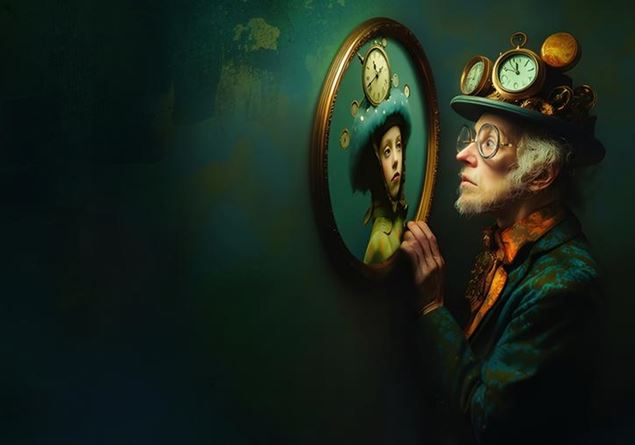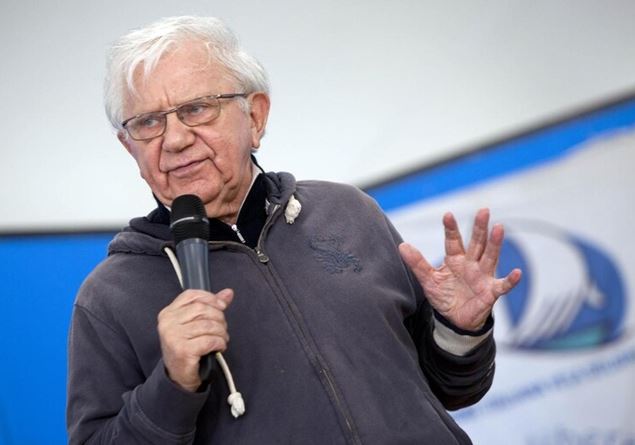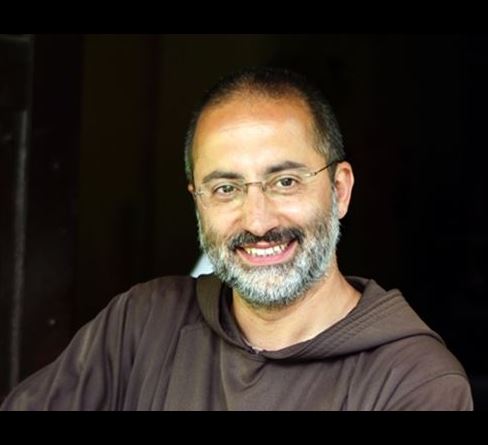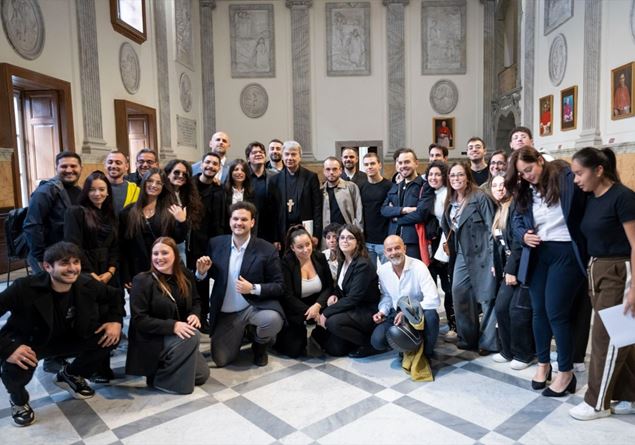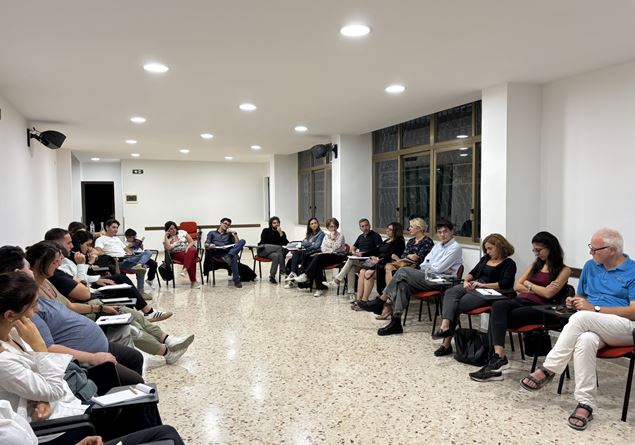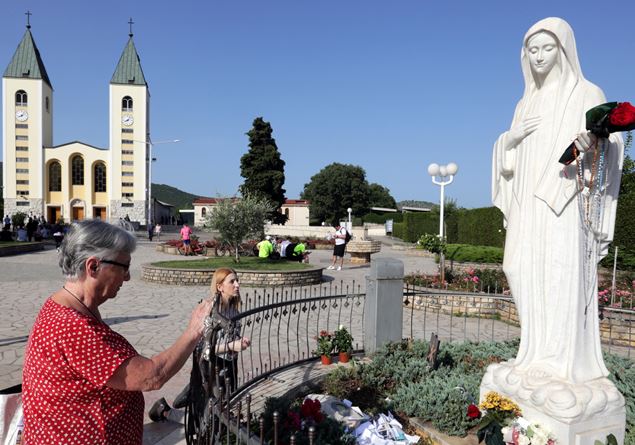
After years of debates, controversies, ad hoc study commissions, the Vatican’s verdict has arrived on Medjugorje, the center of Bosnia and Herzegovina where since 1981 Our Lady is said to have appeared to six visionaries, some of whom are still said to be seeing apparitions today.
And the Vatican’s decision is this: no objection (nothing stands in the way, (in the traditional Latin formulation of the Holy See) to the pilgrimages that have been taking place in that place for years where every year thousands of people come to live a spiritual and prayer experience that, evangelically, is recognized by the fruits “abundant, beautiful and positive” of the faithful. However, we read in the text, «This does not imply declaring the alleged supernatural events as authentic but only highlighting that in the midst of this spiritual phenomenon of Medjugorje the Holy Spirit acts fruitfully for the good of the faithful.».
While the Church does not recognize the “supernatural” (supernaturality) of the alleged Marian apparitions nor could it be otherwise: Last May, the Dicastery for the Doctrine of the Faith approved new, more prudent rules and in these cases the Vatican no longer has a say; in exceptional cases, only the Pope can do so.
However, of the six possible levels of judgment, which range from a no objection to a ban on worship, the former Holy Office has chosen the highest, and this was not at all a given, because the “positive fruits”, “abundant”, “widespread”, “so beautiful”, with people who convert, who decide to embrace religious life or even simply to return to pray, which occur in that place, have been recognized, as can be read in the Note.
The pronouncement entitled Queen of Peace and signed by Cardinal Víctor Manuel Fernándezprefect of the Dicastery for the Doctrine of the Faith, was approved by Pope Francis on August 28.
Therefore, while not expressing a judgment on the morality of the people who since 1981 have claimed to see the Madonna at specific intervals, the Vatican recalls that «pilgrimages are not made to meet with the alleged visionaries, but to have an encounter with Mary, Queen of Peace» and «to meet Christ».
The Vatican’s decision, awaited for years, was presented on Thursday morning in the Vatican Press Office by Cardinal Fernández together with the Secretary for the Doctrinal Section of the same Dicastery, Monsignor Armando Matteo, and by the editorial director of the Dicastery for Communication Andrea Torniellthe.
«The time has come to conclude a long and complex story surrounding the spiritual phenomena of Medjugorje. This is a story in which there have been divergent opinions from Bishops, theologians, commissions and analysts», Cardinal Fernandez begins in the document, reconstructing the long history surrounding this phenomenon. The faithful, who have increased year after year, with only one pause for Covid as happened in all places of worship, had in fact been waiting for the verdict of the Holy See for 43 years.
A Commission led by the Cardinal Camillo Ruini but the pronouncement comes only now thanks to the new rules, approved in May, which on the apparitions allow not only a simple “yes” or “no” (that is, whether or not supernaturality is recognized), as happened in the past, but also a range of different answers. In the Note of the Dicastery this decision is explained: «Although this does not imply a declaration of supernatural character» and recalling that no one is obliged to believe it, the “nulla osta” – issued by the bishop of Mostar-Duvno in agreement with the Holy See – indicates that the faithful «can receive a positive stimulus for their Christian life through this spiritual proposal and authorizes public worship».
Even on the messages that Our Lady would have addressed to the visionaries, the positive evaluation of most of them as edifying and positive texts «This does not imply, however, declaring that they have a direct supernatural origin.” Also because, the Dicastery explains, “some messages – according to the opinion of some – would present contradictions or would be linked to the desires or interests of the alleged visionaries or other people”.
Since there are different opinions “about the authenticity of some facts or some aspects of this spiritual experience, the ecclesiastical authorities of the places where it is present are invited to appreciate the pastoral value and also promote the diffusion of this spiritual proposal”. Without prejudice to the power of each diocesan bishop to take prudential decisions in the case of people or groups who “by using this spiritual phenomenon inappropriately, they act in a wrong way”.
And in reiterating the positive judgment on some messages, this «does not imply a judgment on the moral life of the alleged visionaries». In any case, spiritual gifts «do not necessarily require the moral perfection of the people involved in order to act».
Fernandez: «We are not certain that the messages come from the Madonna»
How to read and interpret the numerous messages of Medjugorje? The Vatican, in the Note, after having listed the “positive fruits” of the spiritual experience of Medjugorje – first of all the message of peace “intended not only as the absence of war but also in a spiritual sense” – warns against what can be partial, misleading or completely wrong readings of the messages themselves: “To prevent this treasure of Medjugorje from being compromised”, it reads, “It is necessary to clarify some possible confusions that can lead minority groups to distort the precious proposal of this spiritual experience».
If one reads some messages partially, for example, they may appear “connected to confused human experiences, to imprecise expressions from a theological point of view or to interests that are not entirely legitimate”, even if some errors may not be «due to a bad intention, but to the subjective perception of the phenomenon».
In some cases, for example, «The Madonna seems to show some irritation because some of her instructions have not been followed; she thus warns of threatening signs and the possibility of not appearing again». But in reality other messages offer a correct interpretation: «Those who make catastrophic predictions are false prophets. They say: “In such a year, on such a day, there will be a catastrophe”. I have always said that punishment will come if the world does not convert. Therefore I invite everyone to convert». Then there are messages for the parish in which Our Lady seems to desire control over details of the spiritual and pastoral journey, «thus giving the impression of wanting to replace the ordinary participation bodies». At other times she insists on listening and accepting the messages, an insistence probably provoked “by the love and generous fervor of the alleged visionaries who with good will feared that the Mother’s calls to conversion and peace were being ignored.”
The insistence becomes more problematic when the messages «refer to requests of unlikely supernatural origin, as when Our Lady gives orders about dates, places, practical aspects, and makes decisions on ordinary matters». The Dicastery for the Doctrine of the Faith instead underlines a message that can be considered as a synthesis of the proposal of the Gospel through Medjugorje: «I want to bring you ever closer to Jesus and his wounded heart.».
In the press conference, Cardinal Fernandez dwelt on this point, reiterating that the messages coming from Medjugorje are “alleged messages” from the Madonna: «We do not accept these messages as private revelations because we are not certain that they are messages from Our Lady butwe welcome them as edifying texts that can stimulate a beautiful spiritual experience».
The cardinal also specified that “the messages should be read as a whole”. Among the messages, “peace is the great proposal of Medjugorje”, where the Madonna is venerated as the Queen of Peace. “This message of peace”, said the Prefect of the Doctrine of the Faith, “iIt implies loving even those who are not Catholic. And this is understood in the ecumenical and interreligious context of Bosnia and Herzegovina.“, which was torn apart by a war that also had religious motivations, “as is happening today in Ukraine but there it was worse.”

